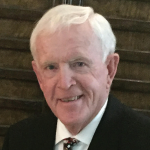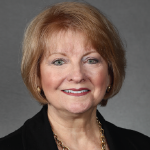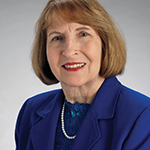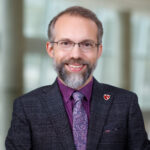Bob and Jan Richardson’s separate paths to physical therapy and rheumatology involve wrestling and horses—although not at the same time. Their intertwining stories also involve a fair amount of serendipity.
Mr. Bob Richardson
 For Bob Richardson, PT, MEd, the path started in the late 1950s, when he was wrapping up a fulfilling college wrestling career at the University of Pittsburgh and also working as a student athletic trainer.
For Bob Richardson, PT, MEd, the path started in the late 1950s, when he was wrapping up a fulfilling college wrestling career at the University of Pittsburgh and also working as a student athletic trainer.
“I did not know anything about physical therapy at the time, but the other athletic trainers said I should think about being a physical therapist or orthopedic surgeon,” he says. “The next thing I knew, I found myself admitted to physical therapy school at the University of Pittsburgh.”
Six months after graduation, in 1960, Mr. Richardson was recruited to become director of St. Margaret’s, a small hospital in Pittsburgh—now part of the University of Pittsburgh Medical Center. “I was the first physical therapist hired, and within 10 years, we had 20–25 physical therapists,” he says. “It was a program driven by practicing rheumatologists.”
Within two decades, the hospital became host to the largest practice of rheumatology-focused physical therapists in the country. “I landed in a place where the rheumatologists believed in what we did as physical therapists, occupational therapists, psychologists,” he says. “So it flourished.”
Dr. Jan Richardson
 Mr. Richardson says he came to the specialty through the back door. But if that analogy holds, then Jan Richardson, PT, PhD, OCS, FAPTA, parachuted in from another universe.
Mr. Richardson says he came to the specialty through the back door. But if that analogy holds, then Jan Richardson, PT, PhD, OCS, FAPTA, parachuted in from another universe.
“I actually intended on being a veterinarian, and I went to Penn State University because it had a program with the University of Pennsylvania where you could go for three years and have early admission to Penn’s veterinary medicine program your senior year of undergrad,” Dr. Richardson explains.
In school, she was vastly outnumbered by men. “It was a different time back then, so when we started to interview with the program about what type of specialty we wanted to pursue, they assumed I would want small animal, but I really wanted equine [medicine],” says Dr. Richardson. “Women didn’t really do large animal medicine back then, so it looked like I was going to change my focus.”
She didn’t know much about physical therapy, but a friend of a friend was a physical therapist, and he gave Dr. Richardson the chance to shadow him at the local community hospital. She found connections between her love of equine medicine and the musculoskeletal focus of physical therapy. Soon after, she was accepted into a physical therapy program at the University of Pennsylvania.
Then, she ran into an unexpected, yet fateful, snag: “I was to have gone for a clinical rotation at Children’s Hospital in Pittsburgh, but 48 hours before it was to happen, they canceled on me,” Dr. Richardson says. “Our clinical educator called Bob—whom she knew, but I did not, and asked if he would be so kind as to take a student for her last clinical rotation so I could graduate on time.”

